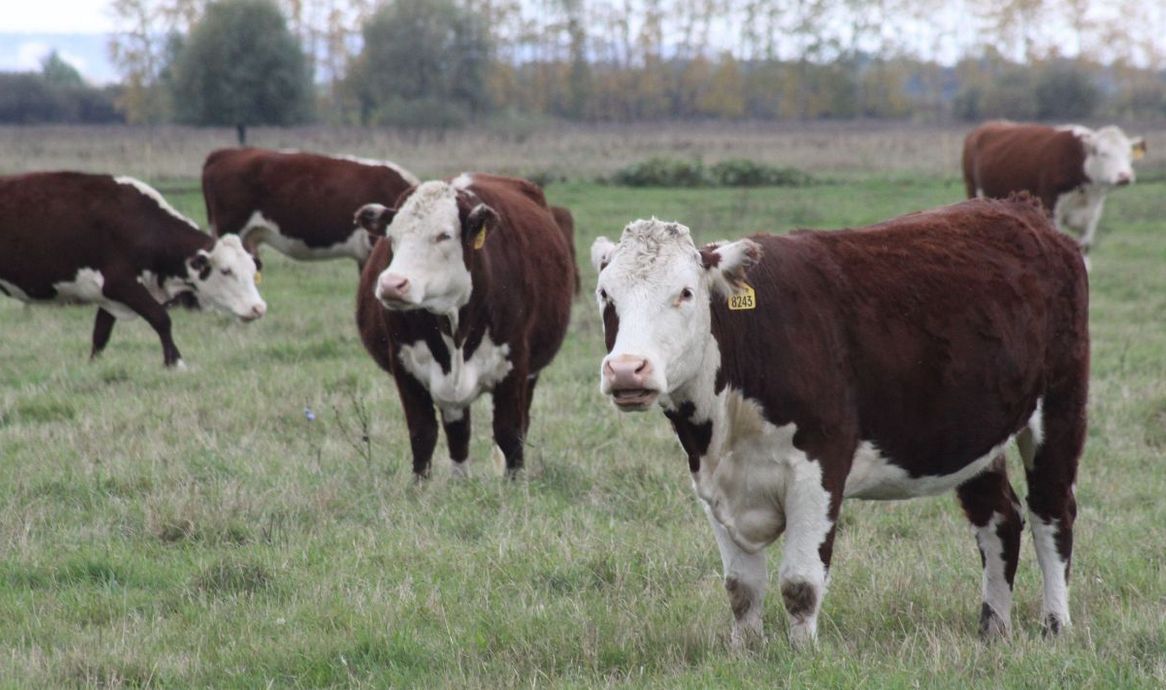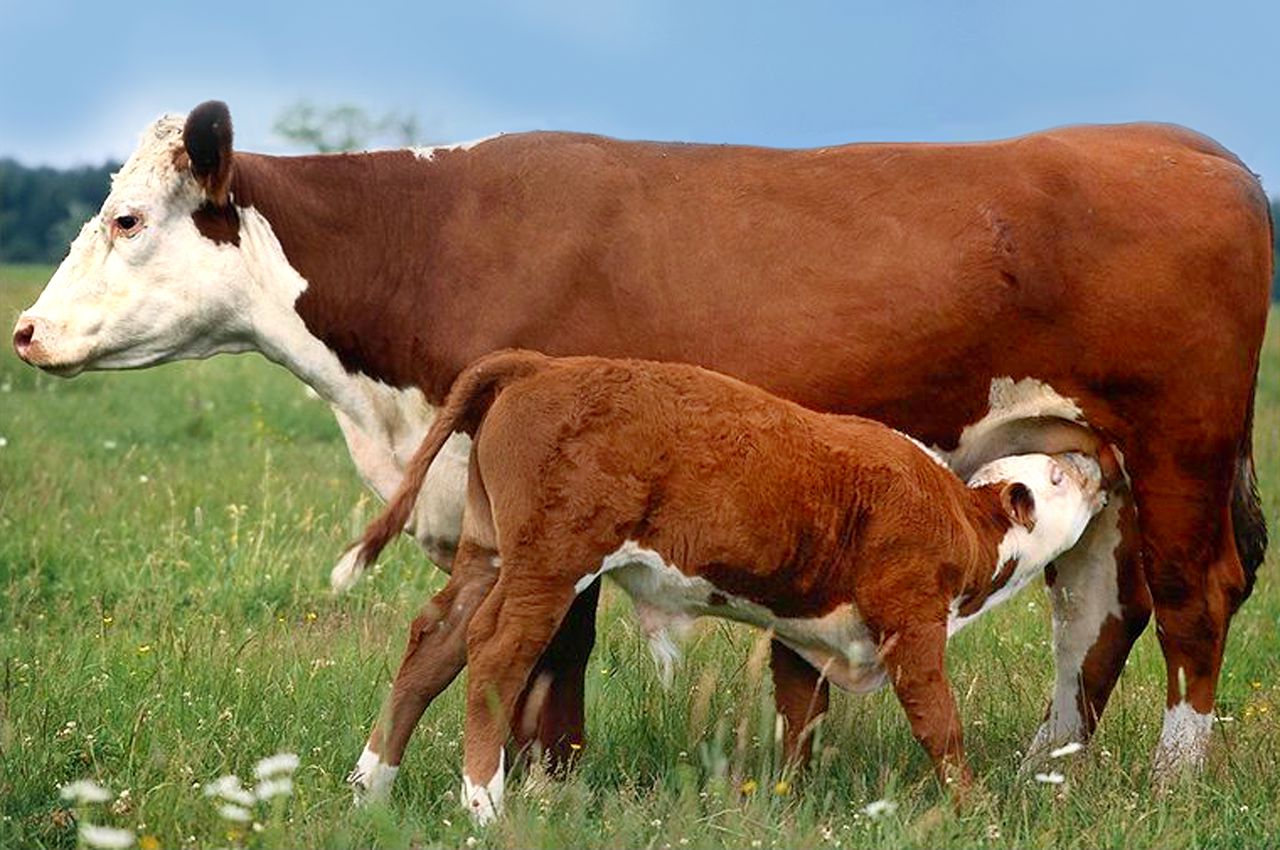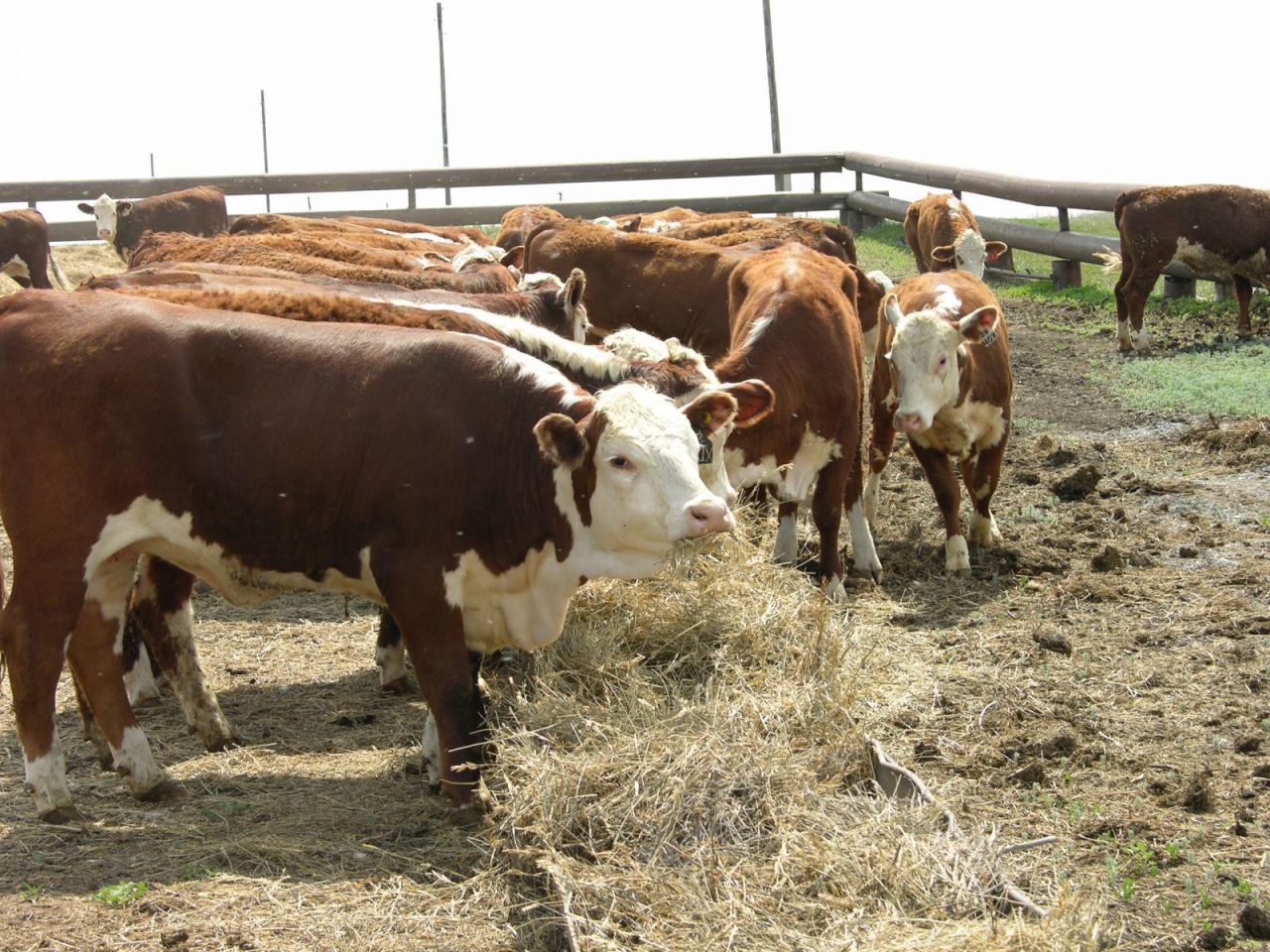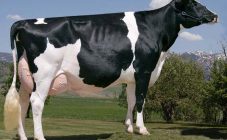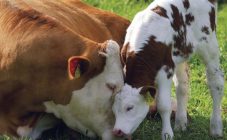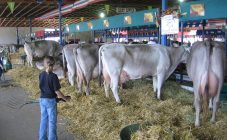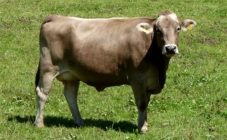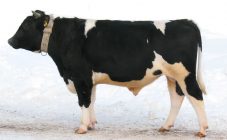Content:
Cattle are raised in Russia not only at the industrial level. Many private entrepreneurs have not only cows, but also goats or rams in their private backyards. And yet, of all cattle (cattle), cows are most often kept in private houses, receiving milk from them, as well as high-quality low-fat tasty meat after slaughter.
The most popular are Kalmyk cows. But some of the most famous in the world are the Hereford cows.
Evolution, domestication
This breed was bred by specialists from the UK. Representatives of the red color of cows, which were bred in the west and south of this country, were taken as a basis. The first representatives of the new breed appeared in England in the 18th century in the County of Herefordshire, and a herdbook for the Hereford breed of cows was introduced in the middle of the 19th century.
When breeding this breed, the main emphasis was on the rapid gain in body weight, but the indicators of milk yield were not taken into account at all - it was important for specialists to breed a purely beef breed of cows.
Currently, the Hereford cattle breed can be found in many countries of the world, the number of these thoroughbred representatives of cattle is steadily growing, and the reasons for its popularity will be discussed below.
In Russia, the first representatives of the Herefords appeared in the first years of the formation of Soviet power. Hereford bulls were used for interbreeding with local dairy and meat and dairy cows. As a result of such breeding work in the USSR, highly productive Kazakh white-headed and Siberian cow breeds appeared.
In the process of breeding, the Hereford breed of cows and bulls received such qualities as great endurance and good adaptation to sudden changes in weather conditions. These cows are of impressive size. Below is a description and features of this breed:
- body color - red, with a brown tint;
- a large head and a massive small neck have a characteristic white color, lips, nose, belly and a tassel on the tail are also white;
- the fore and hind legs are smaller than average, strong and well muscled;
- the horns are white and dark at the ends;
- the body is squat, massive;
- skin - thick, smooth, without folds;
- the mammary glands in cows are poorly developed.
Adult animals reach heights up to 1.2-1.4 m, the chest volume is more than 1.9 m.Currently, representatives of the Hereford are one of the most popular among all breeds of beef cows. Typically, Hereford calves are purchased in large lots for fattening and subsequent slaughter. But to improve the tribe of these individuals, a few copies are enough.
Experts recommend breeding Herefords in regions where the climate is sharply continental. Such cows are bred in Australia, Canada, USA, many countries of the European continent, in Kazakhstan. In Russia, numerous herds of Herefords can be found in the Orenburg region and neighboring areas.
Hereford breed of cows: characteristics
The Hereford breed of cows is a typical representative of beef cattle.
Females of this breed are able to bear offspring annually; even firstborn heifers do not have problems with calving. For the first time, you can bring a heifer to get offspring as early as 2 years old. The weight of a newborn calf is about 26-29 kg. The cow feeds her "babies" up to 7.5-8 months.
Calves grow up very quickly, at 2 months they can weigh 85-90 kg, and Hereford bulls can weigh 10-15 kg more than heifers. The weight of the grown offspring per year ranges from 360 to 490 kg. At 3 years old, females weigh more than 650 kg, and hereford gobies at this age weigh up to a ton (and sometimes more).
Since these cows are raised for meat, the females are not milked, and milk is left to feed the offspring (and their milk productivity is low). Typically, the milk yield per cow per year can be no more than 1200 liters with a fat content of about 4%. In addition, it is quite difficult to milk them, because females practically do not allow people to approach them during lactation - they can kick, knock over a bucket of milked milk.
The yield of meat products is quite high - 63-69%. The hide of these animals is also highly valued - it has elasticity, is quite thick and durable, and its quality is high. Therefore, it is actively used in the manufacture of shoes, purses, ladies' and men's bags and other accessories.
Development and general rules of care
An important advantage of this breed of cattle is its high resistance to frost, unpretentiousness to the diet, so Herefords are bred in regions with a cold climate, where many other animals feel uncomfortable.
The main requirement for the barn in which these animals will be kept is cleanliness and dryness. Also, in this room before winter, you should carefully examine the walls in order to prevent the presence of drafts. All cracks should be carefully sealed to prevent frosty air from entering the barn.
For cows with offspring, separate stalls are allocated, where calves can constantly suck milk. In this case, the cow does not have milk stagnation in the udder, and mastitis will not develop. Separate stalls should also be prepared for the growing calves.
Feeders and drinkers for livestock are placed separately (preferably in the central part of the barn). Before giving birth, the cow is transferred to a separate compartment, where she will stay for several days before calving and for a week after them.
What and how to feed cows of this breed so that they do not slow down the rate of weight gain? It is necessary to start with the timely introduction of complementary foods into the diet of calves. Although they suck milk from their mother for up to 3 months, hay can be added to the diet of a two-week-old calf. To speed up the weight gain of the offspring, it is transferred to a separate stall when the mass of a bull or heifer reaches 180-190 kg.
When a cow feeds calves, roughage, silage, and bone meal must be present in her diet. The daily menu for gobies should contain:
- juicy feed, which contains proteins, phosphorus and calcium;
- hay of cereals and legumes.
The high weight gain of these animals directly depends on the conditions of their maintenance and nutritional balance.If the owners comply with all these rules, then Herefords can gain at least a kilogram daily.
Despite the relative unpretentiousness, such cows still require compliance with the basic rules for care and feeding, otherwise they gain weight more slowly, and a weakened immune system is noted. Cows can also develop leukemia.
Disadvantages and advantages over other breeds
The high popularity of this breed among farmers is due to the fact that these animals have a lot of positive qualities:
- adapt well to different climatic conditions and weather changes;
- unpretentious to the content and diet;
- animals have a calm disposition, docile and do not cause much trouble;
- life expectancy - up to 13-14 years;
- high yield of meat products during slaughter;
- newborn calves are highly resilient, their survival rate is at least 99%;
- with proper care, calves and adults are resistant to most diseases, have almost 100% immunity to tuberculosis and infectious diseases;
- the quality of the meat is excellent, regardless of its shelf life.
This is a short list of the merits of this breed. But we should also recall some of the disadvantages of Herefords. The milk production of cows is too low, usually milk is only enough to feed the offspring, heifers have poorly developed mammary glands. Therefore, this breed is practically not bred in small private farms focused on their own consumption.
Veterinarians strongly recommend that you follow the basic rules for keeping these cows, which, although they are adapted to life in the northern regions, can still get sick if they are in unheated barns with serious drafts. In addition, the barn must always be dry and clean.
The Hereford breed of cows, of course, is not ideal, but every farmer should take a closer look at it.
